Accompanied by the Nordwestdeutsche Philharmonie o.l.v., the Ukrainian concert pianist Anna Fedorova performs Sergei Rachmaninoff’s Piano Concerto No. 2 in C minor, Op. 18 at the opening of the season of Sunday Morning Concerts series at the Great hall of the Royal Concertgebouw, Amsterdam. Conductor: Martin Panteleev. This performance was recorded on September 1st, 2013. It is one of Rachmaninoff’s most enduringly popular pieces and established his fame as a concerto composer.
Rachmaninoff’s Piano Concerto No. 2
Rachmaninoff’s Piano Concerto No. 2 in C minor, Op. 18, is one of his most celebrated compositions, a work that is beloved both for its lush, Romantic expression and its virtuosic demands on the soloist. Composed between 1900 and 1901, this concerto holds a significant place in Rachmaninoff’s life and career, marking his artistic recovery after a period of depression and creative crisis.
Following the disastrous reception of his Symphony No. 1, Rachmaninoff struggled with self-doubt and a creative block that lasted for years. It was only after seeking treatment with Dr. Nikolai Dahl, a physician who specialized in hypnotherapy, that he was able to compose again. This concerto, dedicated to Dr. Dahl, is often seen as a testament to his regained confidence and artistic vitality.
The concerto opens with a series of deep, tolling chords in the piano, establishing an atmosphere of mystery and gravitas. This opening sequence not only sets a dramatic tone but also hints at the profound emotional journey that will unfold. Rachmaninoff’s signature Romantic style shines through in the sweeping, lyrical melodies that follow, as well as in the rich, layered harmonies that characterize the orchestral accompaniment.
Throughout the concerto, there is an ongoing dialogue between the piano and orchestra, with the piano frequently taking center stage in passages of great emotional intensity and technical brilliance. Rachmaninoff’s writing balances technical demands with moments of deep introspection, allowing the pianist to express both power and vulnerability.
The themes in Piano Concerto No. 2 are famously memorable and have been adapted into popular music and films, often evoking a sense of longing and passion. Rachmaninoff’s use of broad, sweeping melodic lines and dramatic contrasts of light and shadow reflects his affinity for the Romantic tradition, particularly the influence of Tchaikovsky. Yet, Rachmaninoff’s own distinctive style shines through in his fluid, expansive phrasing and his seamless integration of piano and orchestra, creating a sense of unity and continuity across the work.
Piano Concerto No. 2 is often regarded as a deeply personal work, reflecting not only Rachmaninoff’s struggles and recovery but also his mastery of piano technique and expressive range. The concerto’s popularity has endured because it speaks universally to listeners with its emotional depth and musical grandeur. It showcases Rachmaninoff’s gifts as both a composer and pianist, balancing virtuosity with lyrical beauty and cementing his reputation as one of the great Romantic composers.
The work is scored for 2 flutes, 2 oboes, 2 clarinets in B♭ (1st movement) and A (II & III movements), 2 bassoons, 4 horns in F, 2 trumpets in B♭, 3 trombones (2 tenors, 1 bass), tuba, timpani, bass drum, cymbals, solo piano, and strings.
Movements
Rachmaninoff’s Piano Concerto No. 2 is written in three-movement concerto form.
1. Moderato
The first movement of Rachmaninoff’s Piano Concerto No. 2, marked Moderato, begins with a striking series of low, tolling chords in the piano, creating an immediate sense of gravity and anticipation. This opening, with its profound simplicity, serves as a kind of invocation, setting the emotional tone for the movement. After the piano’s resonant chords establish the harmonic foundation, the orchestra introduces a brooding, melancholy theme that will undergo transformation and development throughout the movement. The piano soon joins with a sweeping and expansive melody, showcasing Rachmaninoff’s gift for creating long, lyrical lines that convey deep feelings.
The movement unfolds with a continuous, dynamic exchange between the solo piano and the orchestra, embodying a dramatic push and pull that enhances the music’s emotional intensity. Rachmaninoff’s piano writing is highly expressive, with soaring arpeggios and cascading runs that add a rich texture, balancing lyrical beauty with technical brilliance. The piano not only interacts with the orchestra but also leads, at times rising above with powerful, rhythmic motifs that give the music a sense of drive and determination.
Midway through the movement, Rachmaninoff introduces a second, more delicate theme, full of warmth and gentle hope. This theme contrasts beautifully with the darker opening material, offering a moment of lyrical respite. However, the music soon returns to the initial tension, as Rachmaninoff skillfully weaves these contrasting themes together, shifting between moments of calm and dramatic surges.
The movement reaches its climax with a powerful recapitulation, where the main themes reappear with renewed intensity. As the music drives toward the end, the piano plays brilliant, arpeggiated figures, giving a sense of release and resolution while still holding onto a touch of melancholy. This Moderato movement captures the essence of Rachmaninoff’s Romantic style, blending passionate intensity with a deeply introspective quality that draws listeners into its emotional landscape.
2. Adagio sostenuto
The second movement of Rachmaninoff’s Piano Concerto No. 2, marked Adagio sostenuto, offers a moment of lyrical introspection, contrasting with the dramatic intensity of the first movement. The movement begins with a gentle orchestral introduction, setting a calm, almost dreamlike atmosphere. The strings play a soft, delicate melody, while the clarinet introduces a warm, yearning theme that feels both intimate and expansive. This melody establishes a mood of quiet reflection, hinting at Rachmaninoff’s unique ability to create a sense of longing and emotional depth with seemingly simple phrases.
When the piano enters, it joins this melodic conversation with a tender, singing line, using delicate phrasing and subtle dynamics to maintain the movement’s introspective tone. Unlike the virtuosic demands of the first movement, here the piano’s role is more reserved, focusing on creating a lyrical dialogue with the orchestra rather than dominating it. Rachmaninoff employs expressive, arpeggiated figures in the piano that float above the orchestral accompaniment, giving the music a feeling of fluidity and grace. The piano’s voice weaves in and out, allowing the orchestra to echo and develop the central themes, creating a seamless blend of soloist and ensemble.
Midway through the Adagio sostenuto, the music rises briefly to a more passionate outburst, with the piano and orchestra reaching a heartfelt, expressive peak. However, this intensity subsides, and the music returns to the tranquil atmosphere of the opening as if retreating back into quiet contemplation. This subtle ebb and flow between calmness and emotional surge give the movement a natural, organic quality, as if mirroring the complexities of human introspection and vulnerability.
The movement closes with a gentle, fading exchange between piano and orchestra, leaving a lingering impression of serenity. This Adagio sostenuto encapsulates Rachmaninoff’s lyrical genius, evoking deep emotion through its melodic beauty and delicate, carefully crafted orchestration, making it one of the concerto’s most memorable and poetic sections.
3. Allegro scherzando
The third movement of Rachmaninoff’s Piano Concerto No. 2, marked Allegro scherzando, brings the concerto to a thrilling and energetic conclusion, bursting with rhythmic vitality and technical brilliance. The movement begins with a brisk, playful orchestral motif, setting a lively, almost mischievous tone. The piano soon enters with a series of rapid, syncopated rhythms that interlock with the orchestra, creating a dynamic and spirited exchange that drives the movement forward. This rhythmic interplay is one of the movement’s hallmarks, contributing to its playful yet intense character.
Rachmaninoff contrasts the movement’s bold, scherzando-like opening with a more lyrical second theme, introduced by the piano in a warm, singing line. This theme is lush and expansive, showcasing Rachmaninoff’s gift for melody while providing a moment of repose amid the otherwise lively tempo. The orchestra and piano alternate in developing this theme, blending lyrical expressiveness with the energetic drive of the scherzando passages, creating a captivating balance between vigor and lyricism.
As the movement progresses, Rachmaninoff weaves together these contrasting themes, allowing the piano to showcase virtuosic runs, sweeping arpeggios, and powerful chords. The energy continues to build, leading to a grand recapitulation where the main themes return with heightened intensity. The piano and orchestra reach a powerful, triumphant climax, their combined sound embodying the spirit of celebration and release.
In the final moments, the concerto accelerates toward a thrilling coda, where the piano’s rapid, cascading figures and the orchestra’s emphatic chords bring the piece to a stirring close. This Allegro scherzando movement captures the essence of Rachmaninoff’s Romantic style, combining virtuosity, emotional depth, and musical grandeur, leaving a lasting impression of exuberance and strength. The ending resonates as a triumphant affirmation, providing a fittingly exuberant conclusion to one of Rachmaninoff’s most beloved works.
Anna Fedorova
Anna Fedorova was born in Kyiv, Ukraine, into a family of musicians, and she began playing the piano at age five. She gave her first public recital when she was six, and her national debut was in 1997, at the National Philharmonic Society of Ukraine.
Fedorova has given concerts in various halls across Europe, North America, and South America, including performances at the Concertgebouw in the Netherlands, the Palacio de Bellas Artes in Mexico, and the Teatro Colón in Argentina. She has won 14 international piano competitions, including First Prize at the International Rubinstein in Memoriam piano competition in Poland, in 2009.
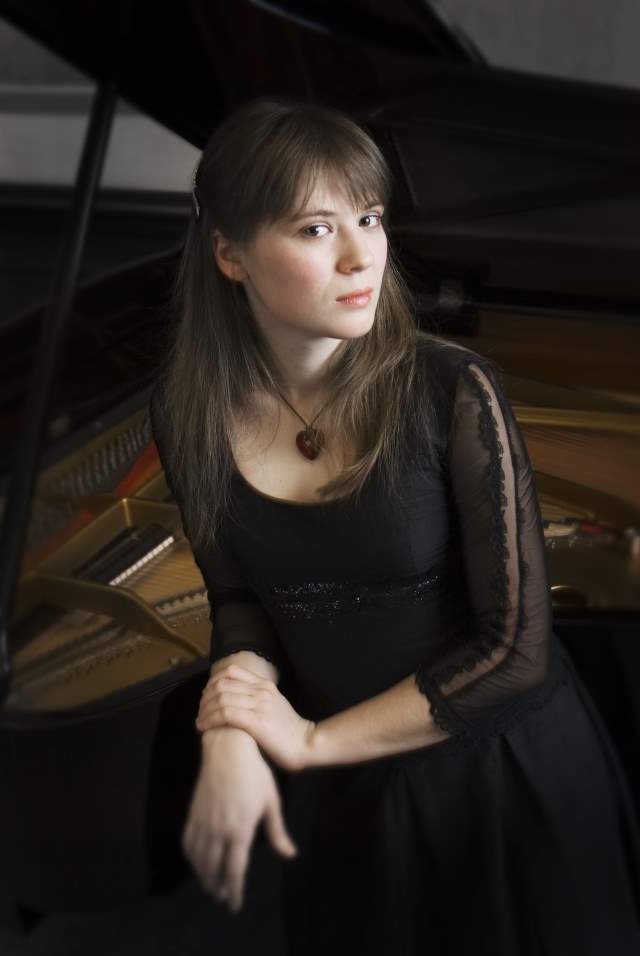
In 2008, she graduated from the Lysenko Musical College for Gifted Children. She is currently a student of Norma Fisher at the Royal College of Music in London and additional studies with Leonid Margarius at the Accademia Pianistica Incontri col Maestro in Imola, Italy.
She has claimed top prizes at numerous international piano competitions, including the International Rubinstein ‘In Memoriam’ piano competition, the Moscow International Frederick Chopin Competition for young pianists, the Lyon Piano Competition, and recently became a recipient of the Verbier Festival Academy Award. She is also a two-time laureate of the Dorothy MacKenzie Artist Recognition Scholarship Award at the International Keyboards Institute & Festival (New York, USA).
A graduate of the Lysenko School of Music in Kyiv (studio of Borys Fedorov), Anna is currently a student of Norma Fisher at the Royal College of Music in London, where she is the recipient of the Big Give full-tuition scholarship. Additionally, Anna studies at the prestigious Accademia Pianistica in Imola, Italy under Professor Leonid Margarius. She has also received artistic guidance from world-renowned pianists like Alfred Brendel, Menahem Pressler, and Andras Schiff.
Sources
- Piano Concerto No. 2 (Rachmaninoff) on Wikipedia
- Anna Fedorova on Wikipedia
- Anna Fedorova’s official website
- Piano Concerto No. 2, Op. 18 (Rachmaninoff, Sergei) on the International Music Score Library Project website
- “A detailed explanation of why Rachmaninov’s Piano Concerto No. 2 is an unassailably epic work of genius” on the Classic FM website
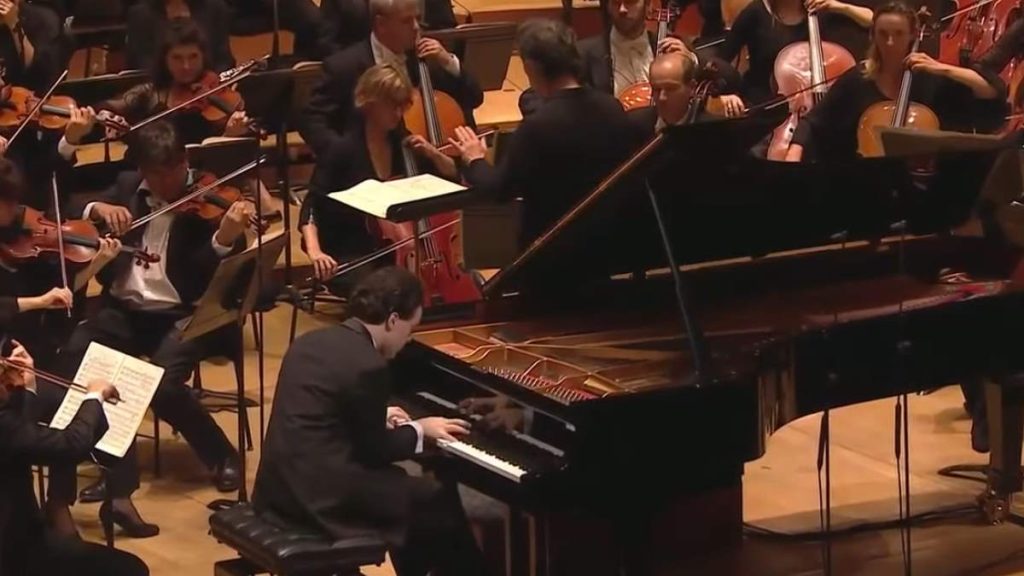
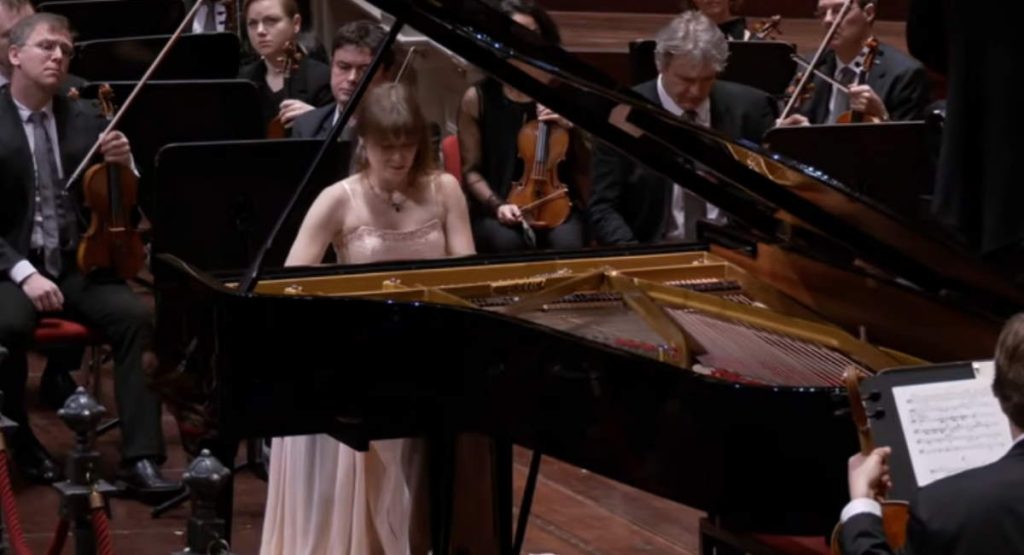

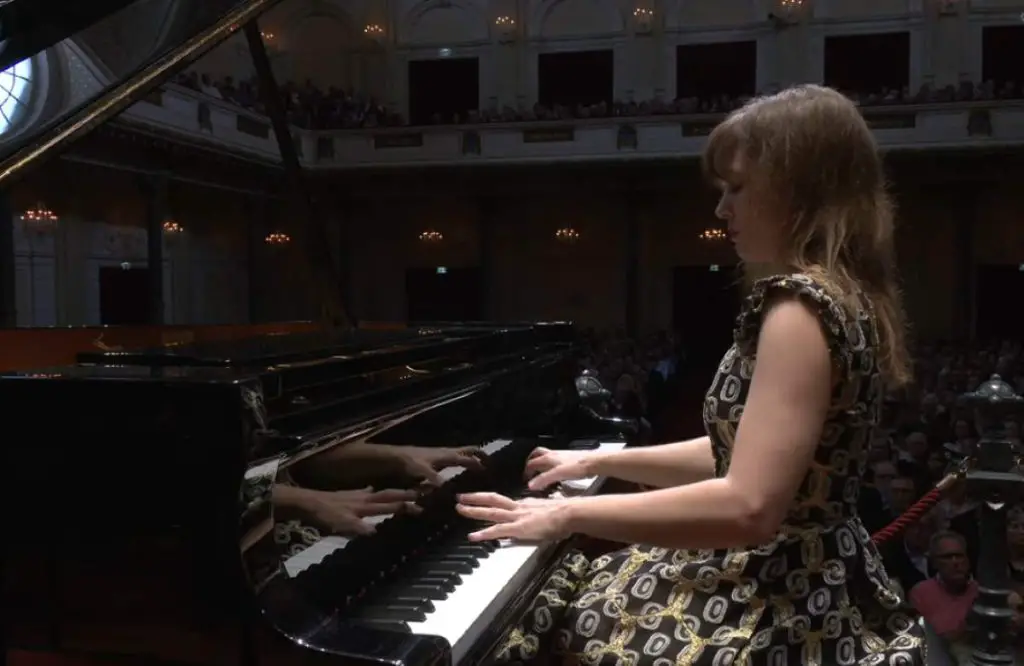
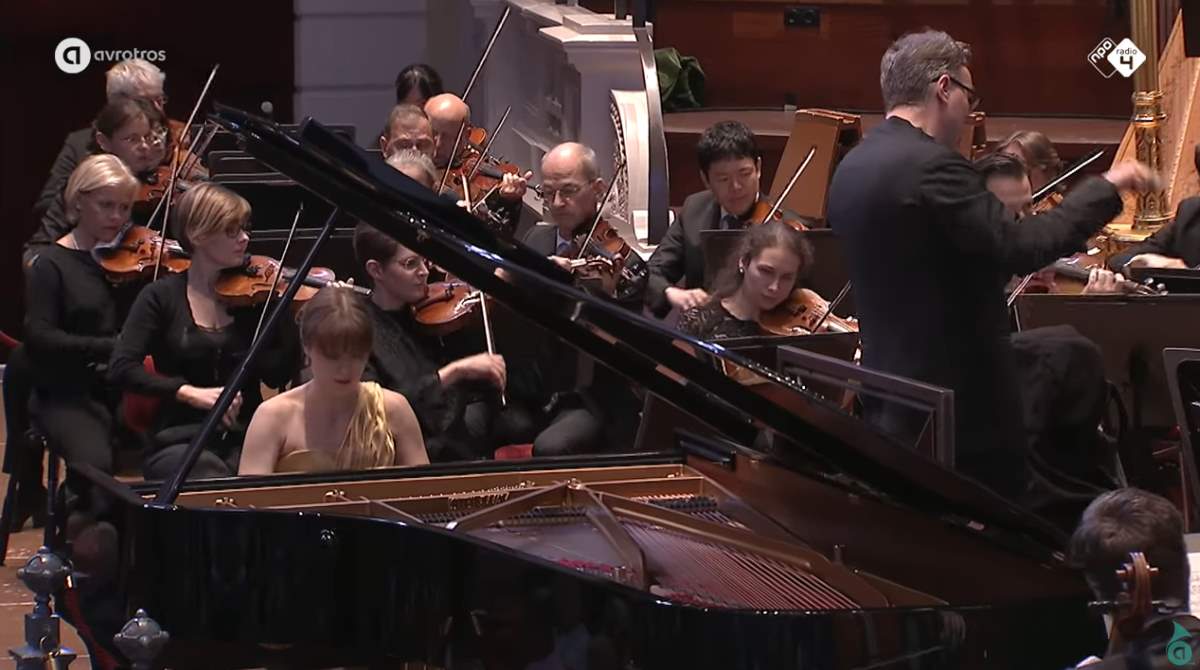
nel film “Shine” è il concerto n° 3 di Rachmaninoff non il 2